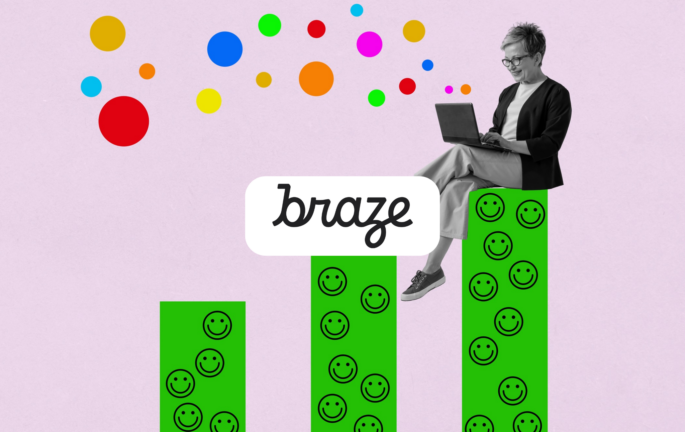In the intricate landscape of customer experiences, a staggering statistic commands our attention: the Baymard Institute reports that the average shopping cart abandonment rate exceeds 70%. Whether in physical brick-and-mortar stores or digital marketplaces, businesses grapple with customers abandoning their purchases seconds before the final step. This underscores a pivotal phase in the customer journey, where the transition from potential to lost sale looms large. Understanding and addressing the factors that drive this phenomenon are not only beneficial but also imperative for elevating customer experiences and ensuring the success of any business.
The purchase phase represents the zenith of the customer journey, a culmination of choices, information exchanges, and decisions that can either fortify a customer's commitment or leave them teetering on the edge. To reach this point, customers have had to go through multiple other phases: they had to evaluate and understand their own needs, educate themselves on the market, browse and compare solutions, understand the product offering they were about to purchase, and accept parting ways with the amount necessary to finalize the transaction. This phase holds profound significance for both customers and businesses, as it can yield a considerable impact on the overall experience and a company's bottom line. All the more reasons why it is disheartening when the process ends prematurely.
Why do customers abandon their cart?
In the intricate ballet of purchasing, where customers move through a meticulously choreographed process, there are numerous opportunities for missteps that can disrupt the harmony. Many companies inadvertently introduce complexity into the buying process, leading to frustration and abandonment by potential customers. These complications can range from offering limited payment options to convoluted purchase procedures, unnecessary forms and queries, unexpected hidden costs, and even the inability to seek clarifications before hitting the fateful "purchase" button. Each of these hurdles, seemingly small in isolation, can snowball into a formidable barrier that halts the customer's journey.

Imagine a scenario where a customer is ready to finalize their purchase, having navigated the intricate maze of product selection, only to be confronted with an unclear or cumbersome payment process. It's akin to reaching the checkout counter with a cart full of items, only to find the payment process arduous and time-consuming or an endless queue of customers lining up at the cashier station, prompting a hasty exit without completing the purchase. Imagine now another scenario, with a customer who had confirmed everything to finalize the transaction only to be informed, mere seconds before the conclusion, that there were other fees to take into account. Whether in a physical store discovering that taxes were not included or online being surprised with unexpected delivery fees, many are the customers who would turn away and run.
Those seemingly small mistakes, ranging from complex order confirmation procedures to vague product descriptions or a complete lack of assistance, can all contribute to customers second-guessing their decision to buy, introducing anxiety and doubt into the process.
These challenges create a significant cognitive load for customers, making the buying process feel tedious and exhausting. Customers expect a smooth, intuitive experience, and any unnecessary obstacles can quickly turn their enthusiasm into frustration. As a result, they may decide to abandon their purchase altogether, seeking alternatives that offer a more streamlined and transparent buying process. Such abandonment not only means a lost sale for the business but can also tarnish the customer's perception of the brand, making them less likely to return or recommend the service to others.
What is the impact of abandoned transactions?
For customers, the repercussions of encountering a convoluted or non-intuitive buying process can be profound. Frustration and dissatisfaction often accompany such experiences, transforming what should be a straightforward transaction into a source of anxiety. In today's digital age, where e-commerce giants have set high standards for ease and convenience, customers have come to expect a seamless purchasing journey. When confronted with a cumbersome process, customers can quickly become disenchanted. This dissatisfaction not only affects their immediate buying decision but can also leave a lasting mark on their perception of the brand.
On the business side, complicating the purchase process carries multiple ramifications. First and foremost, it translates directly into missed sales, impacting the bottom line. In an era of fierce competition where customers have an array of options at their fingertips, even minor hiccups in the buying process can divert them to explore alternatives. Additionally, the tarnished reputation resulting from a suboptimal online experience can be challenging to mend. Word-of-mouth, especially negative experiences, spreads rapidly in our interconnected world, potentially dissuading potential customers from engaging with the brand.
The financial implications are tangible as well. When issues arise with customers pushing through an inefficient buying process, businesses often find themselves compensating customers through refunds, discounts, or complimentary items. This not only affects profit margins but can also strain inventory and resources. Moreover, constant issues can lead to a surge in customer service queries, overwhelming staff and causing further delays and dissatisfaction. In an age where the bar for customer experience is continually rising, businesses that fail to provide a seamless purchase journey risk not only lost sales but also long-term damage to their brand's reputation and relevance in the market.
How to reduce the abandonment rate?
Addressing the challenges that lead to customer abandonment in the buying process requires a proactive approach aimed at streamlining the journey and enhancing user satisfaction.
The first step is to identify those issues. On paper, all the processes may make sense and prevent customer experience professionals from seeing the real issues. It is only on the ground that those issues can be identified.
Talk to your customers and your frontliners, and use surveys and ethnographic research to pinpoint why some of your prospects may abandon before finalizing a transaction. Never assume it happens to others only - no customer journey is ever perfect, and whether you fall above or below the 70% abandonment rate shouldn’t prevent you from searching for ways to improve your results.
Once you have a clearer picture of the most urgent problems for you to fix, here are four elements you may want to consider no matter what as they generally improve the purchase experience and increase your chances of concluding a transaction.
Offering Multiple Points of Contact: Follow the principle that every missed customer contact point is a potential loss. Ensure that customers always have an opportunity to reach out and ask questions without interrupting your sales process.
Clarifying Processes and Instructions: Simplify and guide customers through complex processes. Ensure that your website or store provides clear, step-by-step directions. Explain the necessity of each piece of information you require and minimize unnecessary steps.
Testing with Actual Users: Prior to launching new processes, conduct user testing with a diverse group of individuals, including both regular customers and those unfamiliar with your product line.
Building Feedback Loops: Encourage users to provide feedback. Collecting and analyzing user feedback can provide invaluable insights into pain points and areas for improvement. Always close the loop by informing people who took the time to respond how you have used their feedback to improve your services.
By implementing these solutions, businesses can not only identify and rectify issues leading to customer abandonment but also cultivate a more seamless and engaging buying process that fosters trust and customer loyalty.
For a more in-depth exploration of this topic and other critical issues impacting the customer experience, I invite you to delve into my book, "Customer Experience Unearthed."
-
Julien Rio is AVP, International Marketing at RingCentral and the author of "Customer Experience Unearthed," a comprehensive guide rooted in real-life customer experiences, designed to empower businesses in enhancing their customer journeys. As a Certified Customer Experience Professional (CCXP), he leverages his extensive 15-year marketing expertise acquired from diverse regions such as Asia and Europe. In 2021, Julien co-founded CX Therapy, a dynamic vlog series dedicated to exploring and dissecting real-world customer experiences across various sectors. His profound insights into the realm of customer experiences have earned him recognition in the industry.









